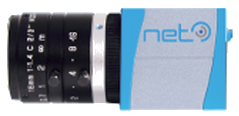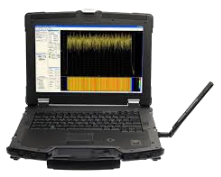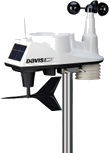Technology
UFODATA stations will consist of a suite of instruments to measure many physical characteristics, of both the UFO/UAP (Unexplained Aerial Phenomena, which we use interchangeably with UFO), such as its visible light and spectrum, as well as environmental measures, such as local magnetic field, or ambient temperature and air pressure.
The prototype station will have a basic set of instruments, which will be extended once the technical, software, data storage, and communication details have been worked out and resolved, along with testing of this first set of instruments.
Stations will also have computing hardware, data storage hardware, internet connectivity, and will run various types of control and other software to manage the instruments and their integration. They will also have a dedicated power source, which will initially be a local connection to the power grid. Eventually, we expect stations to be powered by batteries charged by solar power so that they can be located in relatively remote regions. Fortunately, UFOs have been seen everywhere there are people, and so the stations don't have to be placed on top of isolated mountains, or in uninhabited desert or forests, to maximize the chance of detecting and recording data about the UFO phenomenon.
Although the stations will run continuously, 24 hours a day, to minimize data storage requirements, data will only be recorded for most instruments when an event occurs. When it does, data from the previous few minutes will be retained, along with data for a few minutes after an event has ended.
Several types of data will trigger the main computer to shift a station into 'event' mode. One trigger will be an anomalous light or object detected by the all-sky camera, using motion detection software. This type of software looks for an overall change in the image, or a specific change in a smaller area (a very bright light that suddenly appears, or the movement of a light). The system could also be triggered by a large change in the magnetic field, or some other important physical quantity.
The instruments that will eventually be included in the stations may be grouped into the following categories.

The Optical Unit
Stations will contain two types of cameras.
- An all-sky camera which will provide essentially complete coverage of the sky. It will be one of the main triggers for all the other instruments, as any unusual phenomenon that is detected by this camera will alert the main computer to begin recording data from the other instruments.
- Several digital single-lens reflex (DSLR) cameras, each with an attached spectrograph, that will individually observe a portion of the sky and together provide complete coverage. These cameras can take still images and video, and with their narrower frame of view, show more detail for any phenomenon they record.

The Electromagnetic Unit
Stations will include at least these types of instruments to detect radiation of various types:
- Very high frequency (VHF), very low frequency (VLF), and extremely low frequency (ELF) receivers.
- Ultra high frequency (UHF) spectrometer that measures the intensity, variation, periodicity and morphology of radio waves in the UHF, VHF and VLF/ELF ranges.
- A microwave spectrometer to detect radiation in that range of the spectrum.
- A Geiger counter to detect alpha, beta, and gamma radiation.

The Environmental Unit
Stations will include these instruments to record other valuable scientific data:
- A magnetometer to measure the intensity of all three components - x, y, and z - of the ambient magnetic field.
- An electrostatic detector to record the density of charged particles at the station.
- A weather station to measure various atmospheric parameters (air temperature, pressure, humidity, wind speed, clouds, etc.).
There is the possibility of eventually including additional instruments, including:
- An optical radiometer to measure the radiation intensity in the visible and near infrared and ultraviolet portions of the spectrum.
- Sound and ultrasound detectors.
- A Gravimeter or accelerometer to measure the local gravitational field.
- A high speed video camera.
For more details, see these papers by Dr. Massimo Teodorani of our team. The papers provide details of the type and capability of equipment that we plan to use.
Project for a network of automatic stations for UFO monitoring
Teodorani M. (2015). Full Paper
Instrumented Monitoring of Aerial Anomalies - A Scientific Approach to the Investigation On Anomalous Atmospheric Light Phenomena
Teodorani M. (2014). CAIPAN 2014 Workshop – CNES-GEIPAN (Paris, France), 8-9 July 2014.
Full Paper |
(Presentation Slides)

